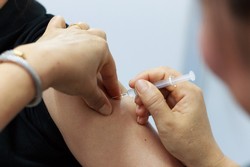Personalised cancer vaccines
Cancer is emerging as a dynamic entity that produces extensive genetic heterogeneity. This often leads to treatment escape and poses a significant challenge for cancer vaccine design. In order to enhance the potency of therapeutic personalised cancer vaccines it is therefore desirable to accurately characterise intratumour heterogeneity. Cancer vaccines are tailored to target tumour-specific mutations unique to a given patient. A key step in the design of personalised cancer vaccines involves the identification of single nucleotide variations (SNVs) in the patient’s tumour. Once SNVs are accurately identified, scientists can select the most immunogenic epitopes and use them in therapeutic vaccines. To improve the efficacy of anti-cancer vaccines, the EU-funded SCA4PCV project developed experimental and computational methods to study and measure intratumour heterogeneity. The SCA4PCV consortium developed state-of-the-art software for clinical applications intended for SNV detection and intratumour heterogeneity analysis. The software utilises a novel class of statistical algorithms that provide an exceptionally accurate analysis of the tumour exome. SNV detection performance was shown to be reproducible from patient to patient regardless of the purity of the tumour sample or the complexity of the tumour genome. This approach was extensively validated in many samples and proved suitable for massive high-throughput automated clinical applications. In another part of the project, scientists developed a single cell imaging technique to estimate the accuracy of single cell sorting by flow cytometry. This method is required for the accurate identification of cancer subpopulations. Furthermore, using laser microdissection, the team successfully obtained genomic material from single cells and populations of cells from tumour sections as a proof-of-concept for subsequent intratumour heterogeneity analysis. Taken together, the SCA4PCV tools support the investigation of intratumour heterogeneity in a cost-effective and high-throughput manner. Implementation of these tools is expected to improve cancer diagnosis, patient stratification and the efficacy of personalised cancer vaccines.







